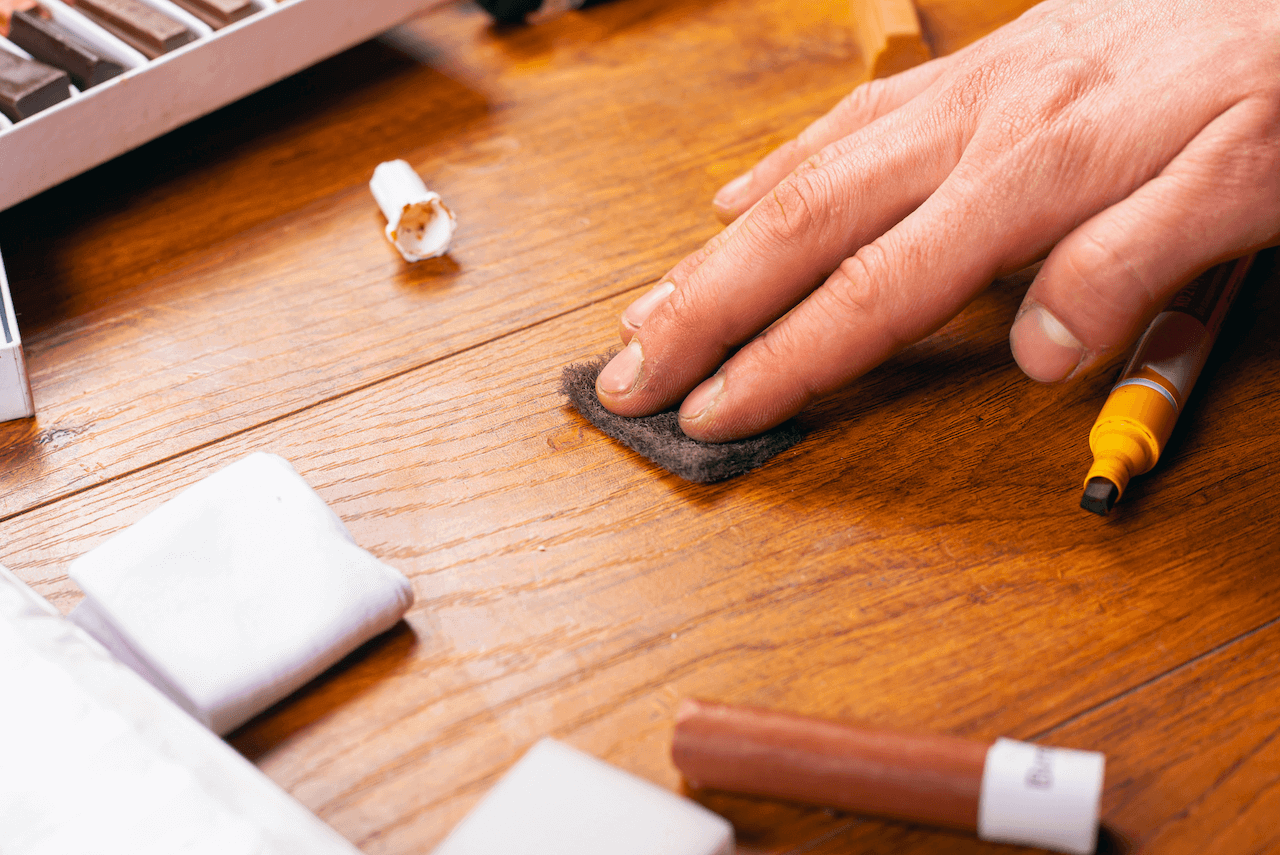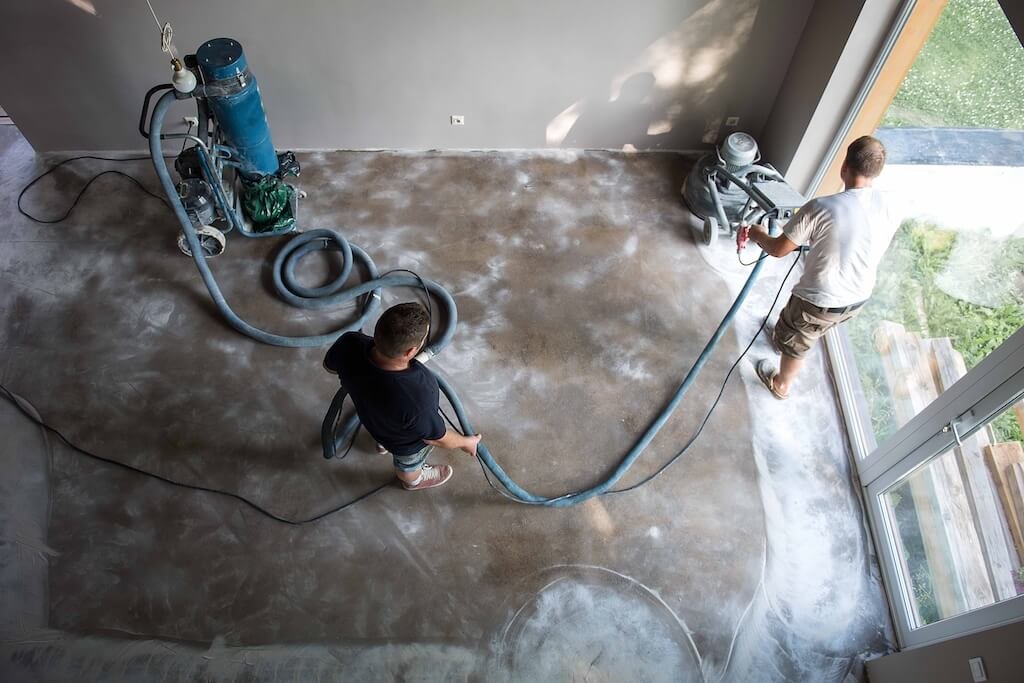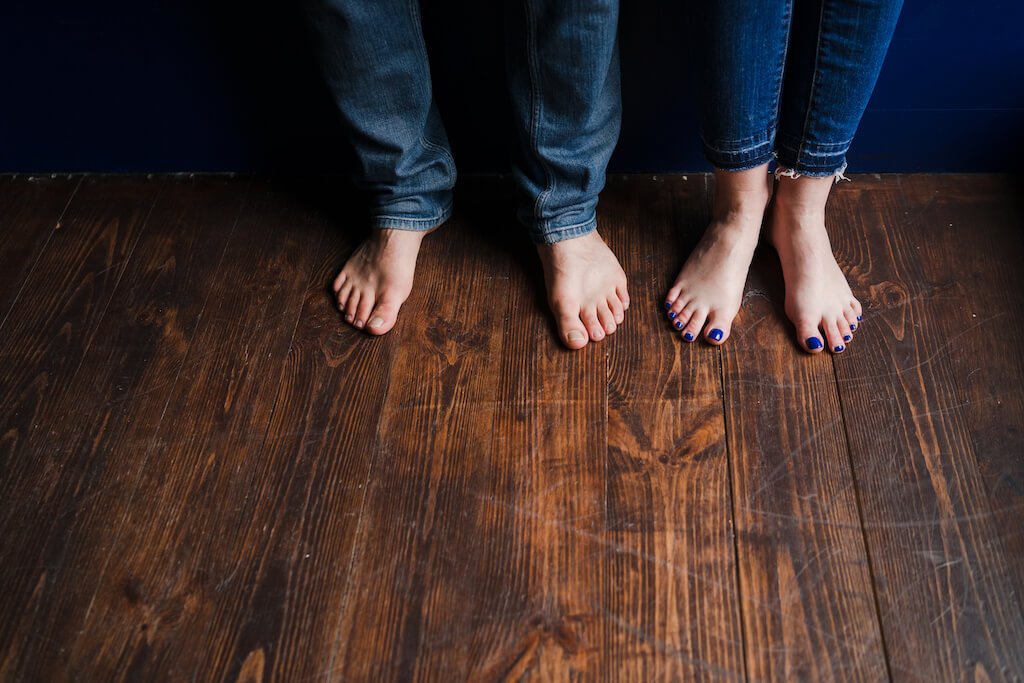
Introduction
Historic wooden flooring is incredibly important in interior design. These floorboards are more than just practical features; they hold a piece of history that can bring charm and sophistication to any room. The detailed patterns and aged appearance developed over many years or even centuries, create a one-of-a-kind look that modern materials often struggle to imitate.
Restoring historic wooden flooring goes beyond simple renovation work. It’s a chance to bring back the allure and grandeur of a past era. When done right, wood floor restoration can make old boards look brand new again while still preserving their historical significance. This process requires careful attention to detail, traditional craftsmanship, and a deep respect for the natural beauty of the wood.
For those who want to keep the originality of their space intact without sacrificing style, there are two options worth considering:
1. Flooring solutions on a budget: Explore affordable ways to upgrade your floors without compromising on style.
2. Expert subfloor preparation services: Ensure a strong foundation for your new flooring with professional subfloor preparation.
Each stage of the restoration process plays a crucial role in achieving a flawless result.
By choosing to restore wooden floorboards, you’re not only improving the appearance of your home but also supporting sustainable design practices. This mindful approach guarantees that historic wooden floors will continue to bring timeless beauty to our living spaces for many more years.
When it comes to selecting the perfect flooring for your home, it’s essential to consider factors beyond aesthetics alone. The right choice should not only complement your interior design but also meet your specific needs in terms of durability, maintenance, and budget. To help you make an informed decision, here are 5 essential tips for choosing the perfect flooring for your home.
Understanding Historic Wooden Flooring
Historic wooden flooring refers to period wooden floors that have historical significance, typically found in older homes and buildings. These floorboards are often made from high-quality wood species such as oak, pine, or walnut and showcase intricate craftsmanship. Styles range from wide planks with visible knots and grains to more refined, narrow boards laid in herringbone or parquet patterns.
The presence of historic wooden flooring creates a timeless backdrop that enhances the charm of antique furniture. When combined, they form a cohesive aesthetic that speaks to the elegance of bygone eras. This synergy between floorboards and furnishings adds depth and character to any space, making it feel both welcoming and historically rich.
For those looking to optimise their space with strategic flooring choices, consider how historic wooden floors can make an impact. Incorporating period wooden floors into your interior design not only preserves architectural heritage but also complements the unique beauty of antique pieces. The subtle patina on aged wood pairs perfectly with vintage furniture, creating an environment where history and style seamlessly blend.
If you’re interested in optimising your space with strategic flooring choices, our blog offers valuable insights. Additionally, we provide a range of historic wooden flooring options that can add character and elegance to your space. Feel free to explore our testimonials to see how our products have transformed other homes and buildings.
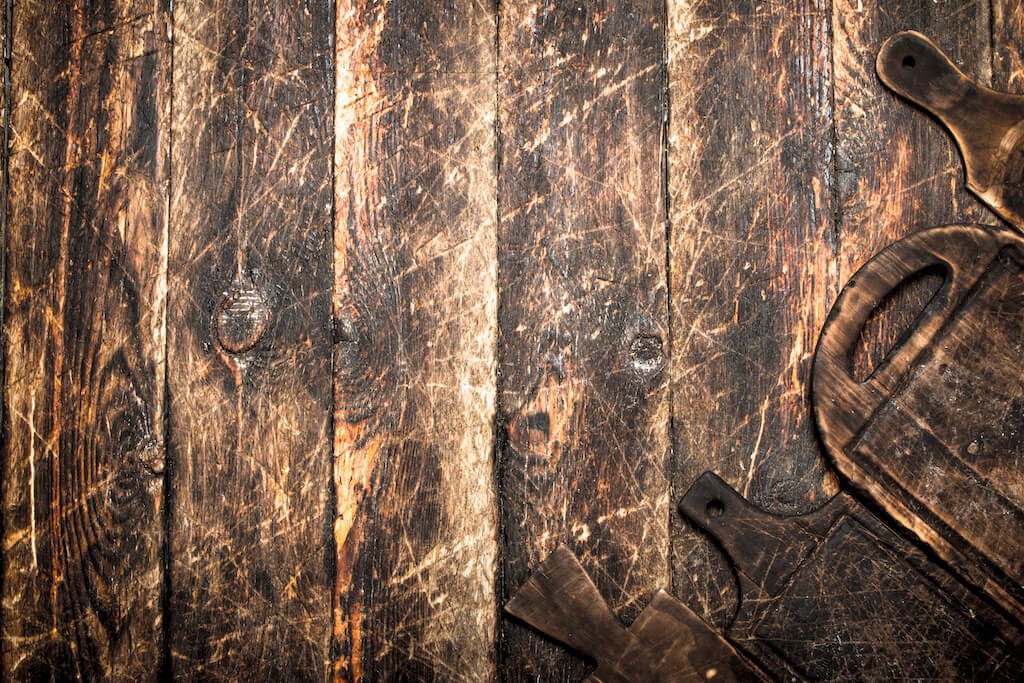
The Art of Wood Floor Restoration
Restoring historic wooden flooring is a meticulous process that begins with thorough preparation. Here’s an overview of the main stages involved:
1. Assessment and Preparation
● Inspect the floor to identify damage, wear, and areas needing repair.
● Clean the surface to remove dirt and residues.
2. Wood Selection
● Choose wood that matches the species, grain pattern, and age of the original boards.
● Ensure compatibility in terms of texture and color for a seamless restoration.
3. Traditional Tools and Techniques
● Skilled craftsmen use tools like hand planes, scrapers, and chisels to maintain authenticity.
● Techniques such as hand-sanding ensure preservation of the floor’s original beauty.
4. Managing Moisture Content
● Control moisture levels in the room to prevent warping or buckling.
● Use hygrometers to monitor humidity and make necessary adjustments.
5. Application of Floor Finishes
● Select finishes that enhance durability and visual appeal. Options include:
● Shellac: Offers a warm glow suitable for antique floors.
● Oil-based polyurethane: Provides robust protection while highlighting wood grain.
● Wax: Adds a soft sheen while preserving patina.
Maintaining moisture content is crucial throughout this process. Excessive moisture can lead to issues like warping or buckling, compromising the integrity of your restored floorboards.
For more insights on hardwood floor repairs, check out The Do’s and Don’ts of Hardwood Floor Repairs which provides valuable guidance on avoiding common pitfalls during repairs. If you’re seeking professional help in Sussex & Kent, visit DM Flooring for expert advice and services.
Restoring historic wooden flooring requires attention to detail, patience, and respect for traditional methods. This approach ensures that each board retains its historical significance while gaining renewed strength and beauty.
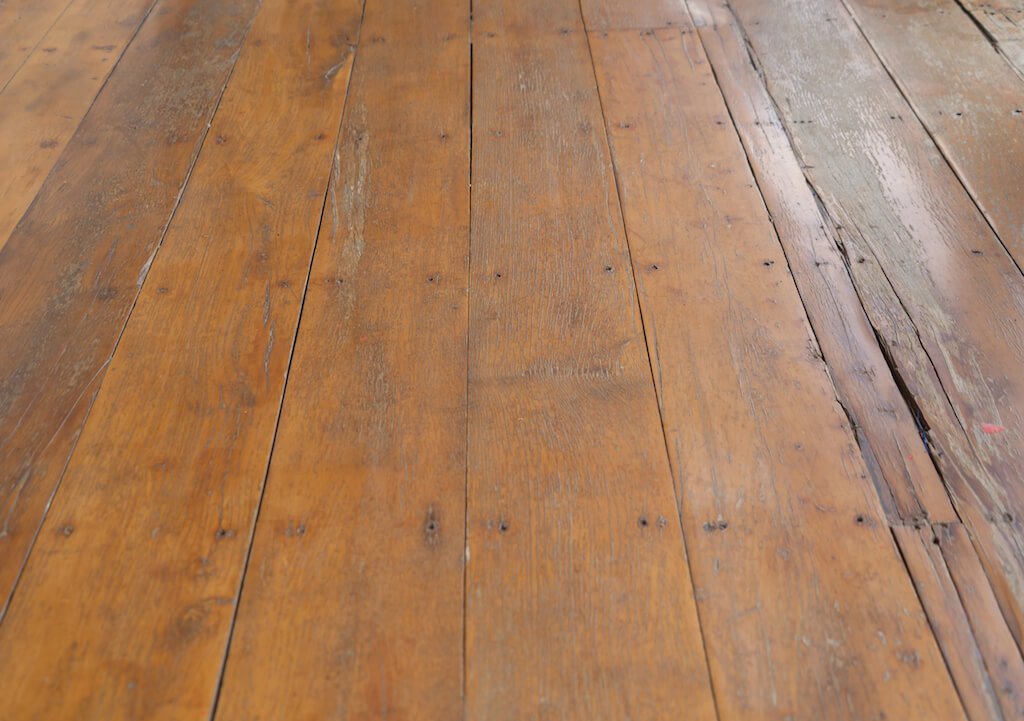
A Step-by-Step Guide to Restoring Period Wooden Floors
Assessing the Condition of Period Wooden Floors
Before you start restoring your period wooden floors, it’s important to assess their condition. Look out for any signs of damage such as:
● Warping: Uneven surfaces or boards that have lifted.
● Gaps: Visible spaces between floorboards due to shrinkage or wear.
● Discoloration: Areas where the wood has faded or stained.
If you notice extensive damage or are unsure about the extent of the repairs needed, consider consulting a professional. They can provide expert advice on whether professional help is necessary.
Restoration Steps Using Traditional Methods
Restoring historic wooden flooring requires careful attention to detail. Here’s a step-by-step guide on how to do it:
1. Preparation
● Remove all furniture and rugs from the room.
● Clean the floor thoroughly using a vacuum and a damp mop.
2. Sanding
● Start by using coarse-grit sandpaper to remove old finishes and level uneven surfaces.
● Gradually switch to finer grits for a smoother finish. Take extra care when working on edges and corners; you may need to hand sand these areas for better precision.
3. Repairing Gaps
● Address gaps between boards by using wood slivers or filler strips. Make sure they fit snugly and trim off any excess.
● Sand over these areas again to create a seamless look.
4. Staining
● Choose a stain that closely matches the original color of your period wooden floors.
● Apply the stain evenly using a brush or cloth, and make sure to allow sufficient drying time.
5. Finishing
● Use a finish that is suitable for historic wood floors, such as wax or acrylic lacquer, to enhance both durability and appearance.
● You may need to apply multiple coats for better protection; just make sure each coat is completely dry before adding the next one.
Incorporating Reclaimed Wood
If you want to maintain the authenticity and historical continuity of your restoration project, consider using reclaimed wood. Here are some tips on how to do it right:
● Selection: Choose reclaimed wood that closely matches the existing floorboards in terms of species and grain patterns.
● Preparation: Before incorporating them into your floor, make sure to clean and sand reclaimed wood pieces properly.
● Installation: Fit the reclaimed boards seamlessly with the original ones, ensuring consistent spacing and alignment.
For expert guidance on subfloor preparation in East Sussex, check out The Ultimate Guide to Subfloor Preparation in East Sussex. To explore top-quality restoration services from experts in Sussex, consider Wood Flooring Restoration.
Restoring historic wooden flooring using traditional methods not only preserves its unique charm but also ensures structural integrity and longevity.
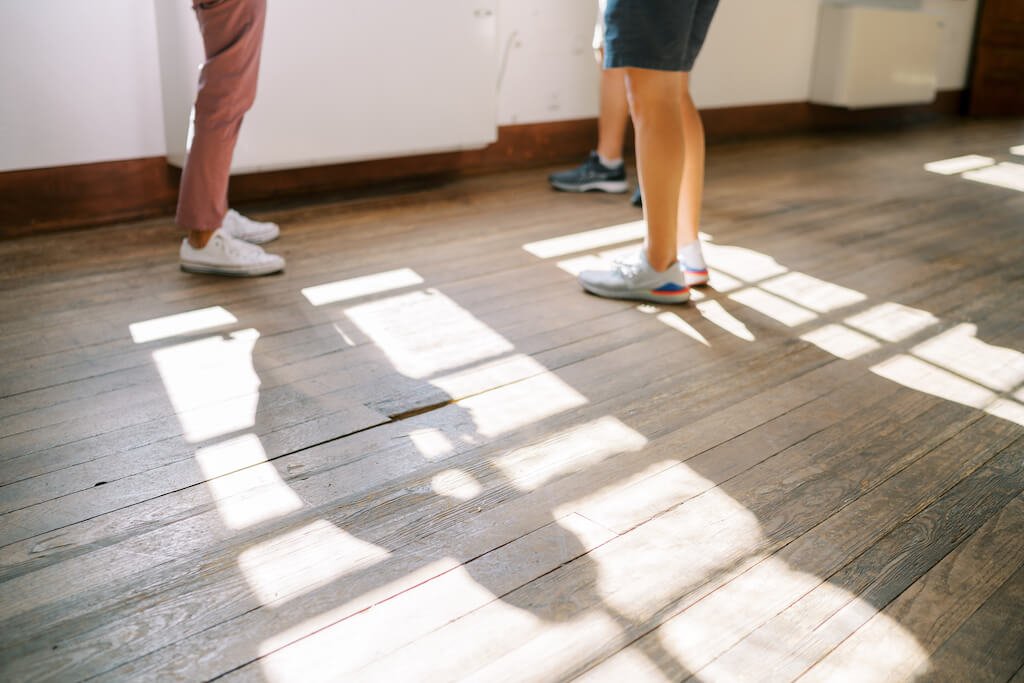
Preserving the Timeless Patina: A Key Consideration in Wood Floor Restoration
Patina refers to the sheen and color that develops on wood floors and antique furniture over time. This aged look is highly valued for its ability to showcase a rich history and add character to any space. When restoring historic wooden flooring, preserving this patina is crucial.
Techniques for Patina Preservation
1. Gentle Cleaning
Use mild, non-abrasive cleaning solutions to avoid stripping away the patina. A damp cloth with a mixture of water and gentle soap can effectively remove dirt without damaging the surface.
2. Sand Lightly
If sanding is necessary, opt for light sanding with fine-grit sandpaper. This helps preserve the color variations and texture that contribute to the floor’s historic charm.
3. Appropriate Finishes
Choose finishes that enhance the natural appearance of the wood. Products like natural oils or waxes can nourish the wood while maintaining its original look. Avoid modern polyurethane finishes which may alter the wood’s authentic appearance.
4. Regular Maintenance
Regularly apply appropriate maintenance products to keep the floor in good condition. This not only preserves the patina but also protects against wear and tear.
Products for Enhancing Patina
● Natural Oils: These penetrate deeply into the wood, enhancing its natural beauty.
● Waxes: Provide a protective layer that brings out the wood’s rich tones.
● Stains: Carefully selected stains can enhance existing colors without masking them.
By following these techniques, you ensure that both the aesthetic and historical integrity of your wooden floors are maintained. For additional guidance on professional services, consider exploring insurance options or the importance of smoothing and leveling subfloors offered by experts in floor restoration in East Sussex.
Preserving patina isn’t just about maintaining an old look; it’s about honoring history and craftsmanship embedded within each plank of wood.
Common Challenges in Wood Floor Restoration
Restoring wood floors often presents several challenges that require attention to detail and expertise. One of the most common issues is dealing with gaps between boards due to shrinkage. Over time, wooden floorboards may contract, creating unsightly gaps that can also lead to drafts and further damage.
Effective Solutions for Common Issues
Gaps Between Boards
Traditional methods such as using slivers or filler strips can effectively address this problem. Slivers, thin wedges of wood, are inserted into the gaps and glued in place. This method maintains the authenticity of the flooring by using similar wood species. Filler strips, on the other hand, involve placing thin strips of wood into the gaps, which are then sanded down to match the existing floor.
Warping and Buckling
These issues often occur due to changes in moisture levels. Managing moisture content is crucial. Using a hygrometer to monitor humidity and employing dehumidifiers can help maintain stable conditions.
Surface Wear and Tear
Regular foot traffic can wear down the surface finish of wooden floors. Sanding and refinishing using traditional tools and techniques can restore the original beauty without compromising its historic value.
Insect Damage
Wood-boring insects can cause significant damage over time. Treat affected areas with appropriate insecticides and replace severely damaged boards with reclaimed wood to ensure consistency in appearance.
Addressing these challenges with traditional floor restoration methods ensures that historic wooden floors retain their character while being functional for daily use.
Dealing with Gaps Due to Shrinkage
Shrinkage is a natural process that occurs as wood loses moisture over time. Traditional repair methods such as:
● Using Slivers: Thin wedges of matching wood are glued into gaps, then sanded flush with the floor surface.
● Filler Strips: Narrow strips of wood are placed into gaps and secured before sanding to match the surrounding boards.
Both methods preserve the aesthetic integrity of historic floors while providing a durable solution to common issues caused by shrinkage.
For more comprehensive wood floor restoration services, including expert flooring installation, it is advisable to engage professional flooring companies with a proven track record in providing stunning and practical solutions. These experts possess the necessary skills and experience to ensure that your wood floor restoration project is executed to the highest standards, delivering results that are both visually appealing and functionally durable.
Bringing History to Life: Successful Case Studies in Wood Floor Restoration
Case Study 1: Victorian Townhouse Revival
In a quaint Victorian townhouse, the original wooden floorboards had been hidden under layers of carpet and linoleum for decades. The restoration project aimed to revive these floorboards, revealing their intricate grain patterns and natural beauty.
Transformative Impact:
● Authenticity: The use of traditional tools and techniques preserved the wood’s original character.
● Aesthetic Harmony: The restored floors complemented the antique furniture, enhancing the home’s historic charm.
Case Study 2: Georgian Manor Transformation
A Georgian manor’s grand hall was suffering from severe wear and tear. The restoration process focused on repairing gaps and replacing damaged boards with reclaimed wood from the same era.
Transformative Impact:
● Historical Continuity: Incorporating reclaimed wood ensured the floor maintained its period authenticity.
● Durability: Applying a suitable finish enhanced both durability and visual appeal.
Case Study 3: Edwardian Cottage Makeover
An Edwardian cottage featured a mix of wooden flooring styles that had seen better days. Restorers carefully managed moisture content to prevent warping during the sanding process.
Transformative Impact:
● Structural Integrity: Proper moisture management prevented future issues like buckling.
● Enhanced Ambiance: The restored floors brightened up the space, adding warmth and character.
For more insights into successful restorations and customer experiences, you can explore some testimonials or learn about their care and maintenance services provided by professionals.
The Enduring Beauty of Restored Wooden Floorboards
Preserving our architectural heritage through the proper restoration of historic wooden flooring is incredibly important. When we use traditional methods to restore wood floors, we can maintain the unique features and historical significance of these old floors. This not only makes our spaces more beautiful but also promotes sustainable design by giving new life to old materials.
Why Consider Wood Floor Restoration?
There are several reasons why you should think about restoring your wooden floors:
1. Aesthetic Enhancement: Restored wooden floors bring a timeless elegance to any room, complementing antique furniture and other period décor seamlessly.
2. Sustainability: By using reclaimed wood for period wooden floors restoration, you contribute to environmental conservation and reduce the need for new resources.
3. Longevity: Traditional techniques ensure that restored floors are durable and can withstand daily wear and tear, preserving their charm for years to come.
The Benefits of Professional Floor Repair Services
For those who want to start restoring their historic wooden flooring, it’s a good idea to explore professional floor repair services. Skilled craftsmen can provide expert fixes tailored to your specific needs. Some benefits of hiring professionals include:
● Proper assessment of the condition of your wooden floors
● Customised solutions based on the type of wood and extent of damage
● Use of high-quality materials and tools for long-lasting results
● Efficient Floor Repair Services – With minimal disruption to your daily routine, experts can provide time-saving and efficient solutions.
To get started, consider reaching out to reliable service providers like East Sussex Flooring’s Floor Repair Services.
Interested in transforming your space with beautifully restored wooden floors? Contact experts today at East Sussex Flooring to discuss your project and get professional advice on how to proceed.

